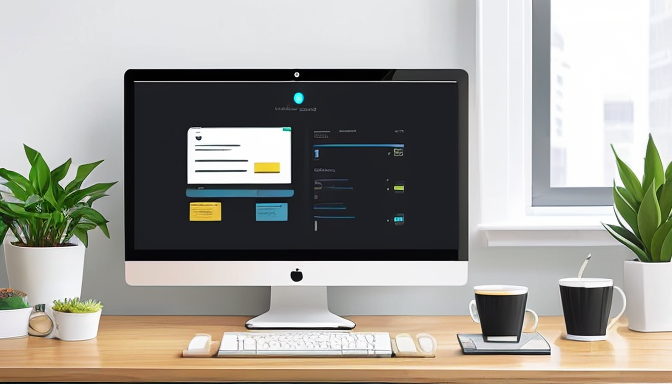Welcome to the fascinating world of Joomla architecture! If you’re looking to build or manage a website, understanding the structural elements of Joomla is essential. Think of Joomla as a well-organized library; each section has its own purpose, and together they create a seamless user experience. So, what are these crucial components? Let’s dive in!
At the heart of Joomla, you’ll find components. These are the core building blocks that handle the main features of your website. For instance, consider a blog component that manages all your articles. Next, we have modules, which are like the shelves that display specific content from your components. Want to show recent articles or a calendar? Modules are your go-to!
Then come plugins, the unsung heroes of Joomla. They add extra functionality without altering the core code. Imagine them as the magical dust that enhances your library experience—like adding a search feature! Finally, we can’t forget about templates. These are the design wrappers that give your website its unique look and feel, much like the cover of a book that draws you in.
All these elements work together through the MVC pattern (Model-View-Controller), which separates the data, the user interface, and the control logic. This separation allows for a more organized, maintainable, and efficient website. In essence, mastering Joomla’s architecture is like learning the layout of your favorite library—once you know where everything is, you can easily navigate and find what you need!
Understanding Joomla’s Core Components
Joomla is like a well-oiled machine, and at its heart lies a set of core components that work together to create a seamless web experience. Understanding these elements is crucial for both developers and users who want to harness the full power of this versatile content management system. So, what are these essential components? Let’s break it down!
First up, we have Components. Think of components as the building blocks of your website. Each component is responsible for a specific feature or functionality, such as managing articles, user profiles, or even e-commerce capabilities. For instance, the com_content component handles all things related to articles, making it essential for any content-heavy site.
Next, we have Modules. If components are the main actors, modules are like the supporting cast. They are used to display content in various positions on your site, such as sidebars or footers. Modules can show anything from recent articles to custom HTML snippets, giving you flexibility in how your content is presented.
Then come the Plugins. These are like the secret sauce in your Joomla recipe. Plugins add additional functionality to your site without altering the core components. For example, a social media plugin might allow you to easily integrate sharing buttons into your articles.
Don’t forget about Templates. They dictate the overall look and feel of your website, allowing you to customize the design to match your brand. With thousands of templates available, you can create a unique online presence that stands out from the crowd.
Finally, we have the MVC Pattern (Model-View-Controller). This architectural pattern separates your application into three interconnected components, making it easier to manage and scale your website. The model represents the data, the view displays the data, and the controller manages the interaction between the two. This separation ensures that your site remains organized and efficient.
In summary, understanding these core components—components, modules, plugins, templates, and the MVC pattern—will empower you to build and manage a Joomla site that not only looks great but also functions flawlessly. So, are you ready to dive into the world of Joomla and unleash its full potential?

Optimizing Joomla Performance
When it comes to , there’s a treasure trove of strategies that can transform your website into a speed demon. Imagine your site as a well-oiled machine; every component, module, and plugin plays a crucial role in its efficiency. First off, understanding the core structural elements of Joomla is essential. These include components, modules, plugins, templates, and the MVC (Model-View-Controller) pattern, each contributing to the overall functionality and speed of your site.
One of the most effective ways to boost performance is through caching. By storing a static version of your pages, caching significantly reduces the load on your server and speeds up page delivery. Think of it as having a fast-pass at an amusement park—why wait in line when you can zip right to the fun?
Additionally, consider implementing optimization techniques such as:
- Minifying CSS and JavaScript: Reducing file sizes can drastically improve load times.
- Image optimization: Use tools to compress images without sacrificing quality.
- Choosing the right hosting: A reliable host can make all the difference in your site’s speed.
Lastly, regularly monitoring your site’s performance is key. Utilize tools like Google PageSpeed Insights to identify bottlenecks and areas for improvement. By maintaining a proactive approach to performance optimization, you ensure that your Joomla site remains not just functional but also fast and user-friendly.
Frequently Asked Questions
- What is Joomla architecture?
Joomla architecture refers to the underlying structure of the Joomla content management system. It includes core components like the database, MVC (Model-View-Controller) framework, and various extensions that help in managing and developing websites efficiently.
- How can I improve the performance of my Joomla site?
To enhance your Joomla site’s performance, consider implementing caching strategies, optimizing images, and utilizing performance-enhancing extensions. Regularly updating your Joomla version and extensions also plays a vital role in maintaining speed and efficiency.
- What are Joomla extensions?
Joomla extensions are additional pieces of software that add functionality to your Joomla site. They can range from simple plugins that enhance features to complex components that provide full-fledged applications, making your site more versatile and user-friendly.
- Is Joomla suitable for beginners?
Absolutely! Joomla is user-friendly and offers a lot of resources for beginners. With its intuitive interface and extensive documentation, even those new to web development can create stunning websites without much hassle.